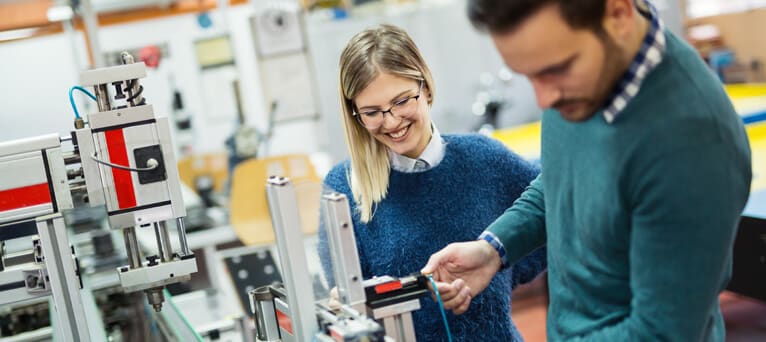Project Highlights:
- Acquire a diverse and up-to-date skill set towards understanding the physics of life by working with spectroscopists at Warwick and plant scientists at Royal Botanic Gardens Kew.
- Develop new single and multimolecular pigment models embedded in biological glassy matrices.
- Discover novel energy transfer mechanisms in dry cells following: (1) absorption of light; and (2) temperature jump measurements using time-resolved absorption spectroscopy.
Overview
The presence of photosynthetic pigments in dry seeds/spores is related to their fast ageing during dry storage, both in natural and artificial conditions [1,2]. This process has severe repercussions to the survival of some seeds/spores during plant dispersion and colonization of new areas (i.e., in situ survival), and in the longevity of some seeds during conventional dry storage [2,3] (i.e. ex situ survival).
During maturation/drying, seeds and spores’ cells go through a process of solidification in which the cytoplasm forms a glass [2]. This physical state reduces molecular mobility considerably and reactions based on diffusion are mostly inhibited [4]. Consequently, deterioration is considered to happen though “localized oxidative processes” that are often mediated by molecules with a high oxidative potential [2]. Green cells of seeds/spores contain chlorophyll and other pigments that, in the absence of water, are known to have a high oxidative potential when light is absorbed and might contribute to their fast ageing (REFS [5-9]), even in the absence of light. However, the physicochemical mechanisms of this process are unknown [2,7].
We have recently hypothesized that the photosystem machinery may release energy even in the absence of photons of light [2]. This energy would oxidize the molecules in a very localized way, starting a deteriorative cascade that will ultimately lead over time to ageing and death. The molecules that are primarily responsible for such a mechanism of dry seed/spore viability loss are likely to be photosynthetic pigments. However, their activation and downstream consequences, and time course for action, are unclear [1,2].
In this PhD proposal, by combining chemical physics and biology, we aim to help unravel the fast ageing of chlorophyllous cells when dried to a glassy state. Firstly, we will use single-molecule models to determine the way the “oxidative energy” is produced and transferred in single pigment models embedded in glassy matrices. Secondly, we will explore the energy transfer across more complex multimolecular models, which may include whole photosystems, isolated chloroplasts, and single cell chlorophyllous propagules (e.g., fern spores). In so doing, we will unveil aspects of the physics of life.
Methodology
Pigments will be extracted from chlorophyllous seeds/spores, and alternatively from other plant tissues, using standard methods [10-14]. Pigments will be embedded in solid amorphous matrices, so they can be analyzed in the physical state at which they are preserved in the dry seed/spore. Methods to embed plant pigments in non-organic amorphous matrices are available [15-17]. However, we aim to develop new solid-amorphous films using biomolecules such as sugars and proteins [18,19].
Transient absorption spectroscopy [20] will be used to track energy-flow in pigments following absorption of UV-radiation. These techniques are crucial in enabling us to build molecular-movies of energy flow across 10-15–10-3 seconds. The excitation source will be optical; both UV-excitation and IR. For UV-excitation, this will enable us to probe the light-induced aging of seeds/spores. For IR-excitation, this will enable us to study thermally-initiated processes by selecting specific vibrational/phonon modes within the glassy matrix [21]. Further characterisation will be done using steady-state techniques (UV/Vis/FTIR).
Training and skills
The student will be trained to perform a diverse range of experiments and will be flexibly based between both institutions. The student will benefit from exposure to a number of experimental techniques, both at Warwick (laser experiments, steady-state UV/Vis and FTIR spectroscopy) and RBG-Kew (GC-MS, HPLC, Differential Scanning Calorimetry, Dynamic Mechanical Analysis), set in a much wider interdisciplinary context, which strives to understand and prevent the aging of seeds and spores. RGB-Kew also has expertise in science communication with specific training provided and opportunities to write for the RGB Kew website and social media channels and engage with media outlets.
Partners and collaboration (including CASE)
This project will be a partnership between the Chemistry department at Warwick and Comparative Seed Biology at RBG-Kew. Additionally, the project will benefit from the international networks from both partners. Stavros (Warwick supervisor) leads an EU consortium that strives to develop ‘photon-to-molecule heaters’ (BoostCrop); these heaters protect plants from cold-snaps. The current proposal centres around understanding energy transfer mechanisms and will therefore be of great interest to researchers within BoostCrop (and vice versa). RBG-Kew has partnerships with more than 95 countries through active projects. Pritchard, Colville and Ballesteros (Kew Supervisors) are involved in the Garfield-Weston Foundation Tree Seed Banking Project, providing the underpinning science on seed storage stability. Additionally, Pritchard recently led/co-led for Kew on two EU Framework projects (NASSTEC and EcoSeed) on seed traits, and a NERC Newton Fund grant (BESANS).
Possible timeline
Year 1: Development of pigment models (single pigment and whole photosystem) embedded in sugar/protein glassy matrices. Thermal and mechanical characterization (by DSC and DMA) of the glassy pigments films. For this year the student will be located mostly at RGB Kew, Wakehurst.
Year 2: Development of thermally initiated transient absorption setup. Using both optical and thermal initiated processes to study energy transfer in systems developed in Year 1. For this year, the student will be located mostly at Warwick.
Year 3: Knowledge garnered from Year 2 studies will enable further development of pigment models to test proposed energy transfer mechanisms. The interdisciplinary nature of this year’s work will mean the student spends significant amounts of time both at Warwick and Kew.

 Continue with Facebook
Continue with Facebook




